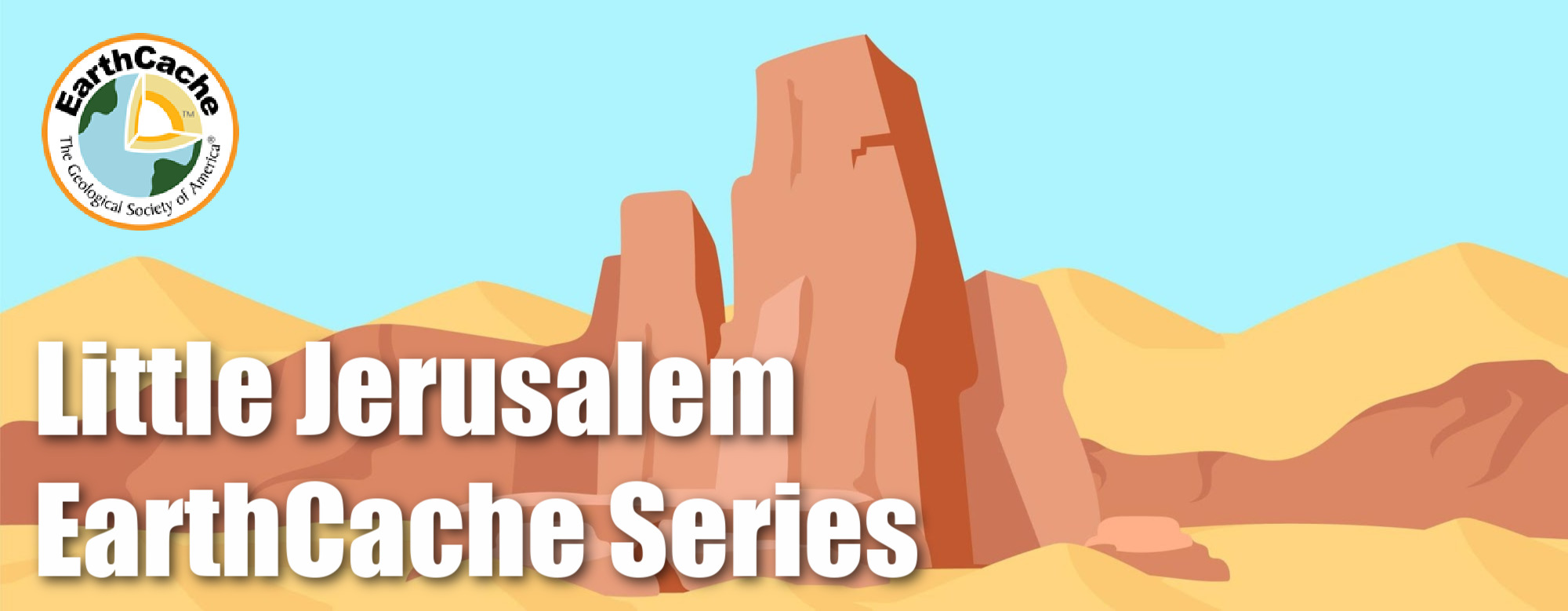
Welcome
Welcome to the Little Jerusalem EarthCache Series. This series was placed at the request of the Stae Park so it is important that you follow all rules to demonstrate how responsible geocachers are with the environment. Please stay on the trail and follow all rules as posted. At no point, should you touch, collect, or disturb the environment except where specifically directed. Please enjoy this series of EarthCaches responsibly. There is a $5 day fee to access this park.
Earth Science Lesson
When you get to GZ you should be able to observe a geological feature called a window. A window is a geologic structure formed by erosion or normal faulting on a thrust system. Simply put it resembles a hole or a window through the rock.
The real question is how are these formed?
The most logical answer is probably a combination of wind erosion and material with different weathering resistances. Wind erosion is of two primary varieties: deflation, where the wind picks up and carries away loose particles; and abrasion, where surfaces are worn down as they are struck by airborne particles carried by wind.
Deflation is divided into three categories:
-
surface creep, where larger, heavier particles slide or roll along the ground;
-
saltation, where particles are lifted a short height into the air, and bounce across the surface of the soil; and
-
suspension, where very small and light particles are lifted into the air by the wind, and are often carried for long distances.
Saltation is responsible for the majority (50-70%) of wind erosion, followed by suspension (30-40%), and then surface creep (5-25%). Abrasion is the mechanical scraping of a rock surface by friction between rocks and moving particles during their transport by wind, glacier, waves, gravity, running water or erosion. After friction, the moving particles dislodge loose and weak debris from the side of the rock. If there are weaker types of rocks fused together with stronger types of rocks, the weaker type will give way to erosion sooner. Usually this results in some type of rockslide or collapse, but that is not the case in this instance.
Logging Tasks
- What are the estimated dimensions of the window you can observe from GZ?
- Which of the types of wind erosion do you think is to blame here?
- If you were to choose a type of deflation wind erosion which type do you think had the most impact here?
- Post a photo of yourself, or a proxy, near GZ. (No spoilers please)
References
- Schmid, S.M., Scharf, A., Handy, M.R. et al. The Tauern Window (Eastern Alps, Austria): a new tectonic map, with cross-sections and a tectonometamorphic synthesis. Swiss J Geosci 106, 1–32 (2013). https://doi.org/10.1007/s00015-013-0123-y
-
Patton, Hisey (2017). What is a geological window? Retrieved from https://www.quora.com/What-is-a-geological-window
